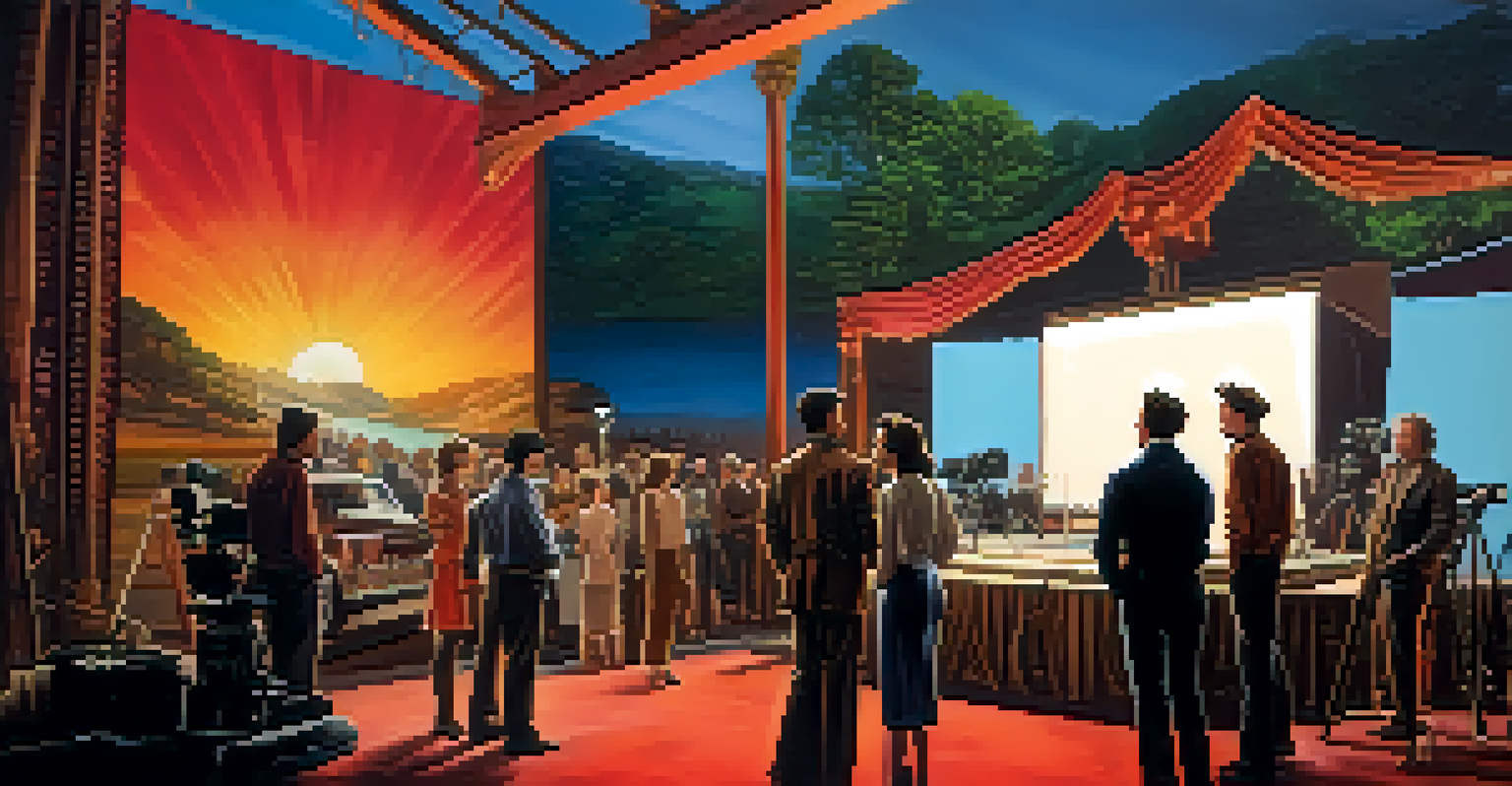Challenges in Adapting Novels to Film: A Creative Perspective

Understanding the Core of the Story
Every novel has a unique essence that makes it special. When adapting a book into a film, capturing this core is crucial. This often means distilling complex plots and themes into a two-hour format, which can be a daunting task.
A film is a work of art that can stand on its own, but it must also be a reflection of the book that inspired it.
For instance, consider how 'The Great Gatsby' has been adapted multiple times. Each adaptation brings its interpretation to the surface, reflecting different eras and societal values. This highlights the challenge of ensuring the film resonates with both new audiences and devoted readers.
Ultimately, filmmakers must balance fidelity to the source material with the need to create a compelling cinematic experience. This delicate dance requires a deep understanding of the original work and a vision for how it can translate to the screen.
Condensing Characters and Subplots
Novels often feature a multitude of characters and intricate subplots that enrich the story. In contrast, films typically have limited time to develop these elements, leading to the inevitable trimming of characters and storylines.

Take 'Harry Potter,' for example. While the films are beloved, many fans noted the omission of important characters and plot points from the books. This raises questions about how these decisions affect character development and viewer engagement.
Capturing a Story's Essence
Adapting a novel into a film requires filmmakers to distill its core themes and plot elements while resonating with both new audiences and devoted readers.
Filmmakers must decide which characters and subplots are essential for the film’s narrative. This process can be controversial, as fans may feel a personal connection to every aspect of the original story.
Visual Storytelling vs. Written Word
One of the most significant differences between novels and films is the medium itself. While novels rely heavily on descriptive language and the reader's imagination, films must convey these ideas visually.
The magic of storytelling lies in its ability to adapt and evolve, bringing new life to familiar tales.
Imagine a scene from a book that describes a character's internal struggle in great detail. Translating that emotion into a visual format can be challenging but also offers exciting creative opportunities. For instance, a subtle facial expression can sometimes say more than pages of text.
Directors and cinematographers must work together to craft visuals that capture the story's essence. They must consider how to show, rather than tell, which can lead to innovative storytelling techniques that elevate the narrative.
Audience Expectations and Reactions
When adapting a beloved novel, filmmakers face the challenge of meeting audience expectations. Fans often have strong emotional ties to the source material, which can create high stakes for the film's success.
For example, the adaptation of 'The Hitchhiker's Guide to the Galaxy' was met with mixed reviews from fans who felt it didn't capture the book's humor and spirit. This illustrates the delicate balance filmmakers must strike between creative freedom and fan loyalty.
Balancing Characters and Pacing
Filmmakers must make tough decisions about which characters and subplots to keep, often sacrificing depth for the sake of pacing and runtime.
Understanding the audience's connection to the original work is crucial. Filmmakers need to navigate these expectations while also appealing to those who may be unfamiliar with the book.
Time Constraints and Pacing Challenges
Movies typically run between 90 to 180 minutes, which poses significant challenges when adapting novels that may span hundreds of pages. This limitation forces filmmakers to make difficult choices about pacing and the amount of detail included.
Consider 'The Lord of the Rings' trilogy. While Peter Jackson’s adaptation was successful, cramming the vast narrative into a manageable film length meant certain scenes and details had to be left out. This raises the question of how much is too much to cut without losing the story's heart.
This challenge of pacing can lead to a rushed narrative, where the film feels like a mere summary of the book rather than a fully realized story. Filmmakers must carefully consider how to maintain the story's rhythm and emotional impact.
The Role of Creative Interpretation
Adapting a novel isn't just about retelling the story; it's also an opportunity for creative interpretation. Filmmakers can bring fresh perspectives and new ideas to the material, which can lead to innovative storytelling.
For instance, the film adaptation of 'The Shining' diverges significantly from Stephen King's novel, offering a unique take that sparked discussions about artistic interpretation. This kind of bold choice can either delight or infuriate fans, depending on how well it's executed.
Cultural Context Matters
Understanding cultural shifts is crucial for filmmakers to adapt stories in a way that feels relevant and engaging to contemporary audiences.
Embracing creative liberties can lead to a more engaging film, but it can also risk alienating fans of the original work. The key is finding a balance that respects the source material while also providing a new lens through which to view the story.
The Impact of Cultural Context
Cultural context plays a vital role in how stories are perceived and understood. When adapting novels from one medium to another, filmmakers must consider how cultural shifts may affect the narrative's relevance.
For example, the themes of 'Pride and Prejudice' resonate differently today than they did in the early 19th century. Modern adaptations often highlight contemporary societal issues, making the story feel fresh and relatable to new audiences.

Adapting a novel for film requires an understanding of the current cultural landscape, ensuring that the film speaks to viewers in a meaningful way. This sensitivity can enhance the story's impact and broaden its appeal.